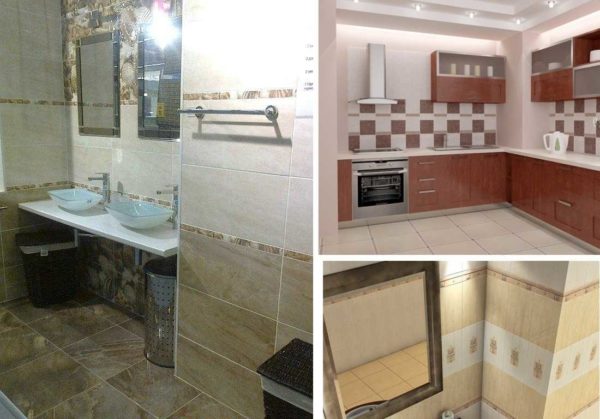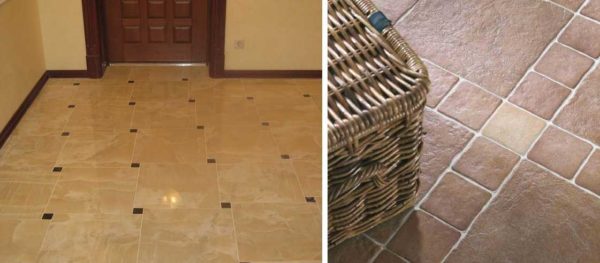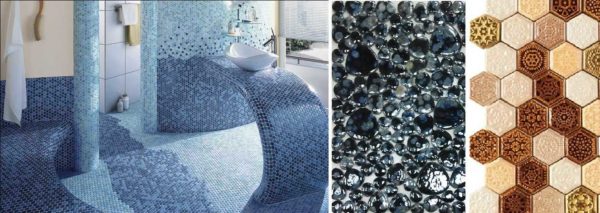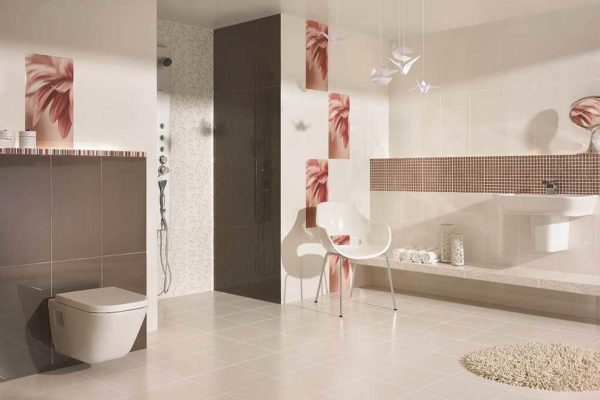What are the sizes of tiles
By developing bathroom design or registrationkitchen apron it is important to decide not only on the color of finishing materials, but also on their dimensions. The size of the area to be covered plays a significant role in choosing the size of the tiles. This will determine not only the general appearance after repair, but also the cost of repairs.
When choosing a layout plan, it is important to know what sizes can be found in the retail network in order to initially lay some proportions. If earlier in the Soviet Union the main dimensions were 100 * 100 and 150 * 150 mm, now the choice is much wider, and you can choose more accurately.
The content of the article
Sizes of ceramic wall tiles
For wall decoration, tiles are produced in two formats: rectangular and square. Rectangular can be placed with the long side vertically or horizontally. The effect is different. A tile stretched up visually makes the room taller, and horizontally wider. Both types can be different in size - from small to large.
There are several standard sizes:
- rectangular on the walls: 200 * 300; 250 * 400; 250 * 500;
- square wall: 100 * 100, 150 * 150, 200 * 200.
But there are a lot of non-standard tile sizes. For example, there is a large square wall - up to 40 * 40 cm. Or a long and narrow rectangular one - 10 * 30 cm, 20 * 50 cm or 20 * 60 cm. Such tile sizes are usually not found in mass collections. When buying non-standard options, always take with some margin: author's collections are released in small quantities. If it becomes necessary to replace the broken tile, it may no longer be on sale.
The thickness of the wall tiles is from 4 to 9 mm. The thickest is often used for exterior wall decoration. The optimum thickness for bathroom and kitchen walls is 6–8 mm.
For floor
Thick ceramic tiles with a hard protective coating or porcelain stoneware are placed on the floor. In form, it can be:
- square (standard tile sizes, millimeters 200 * 200, 300 * 300, 330 * 330, 350 * 350, 400 * 400, 450 * 450);
- rectangular, millimeters: (100 * 200, 150 * 300, 200 * 300, 300 * 400);
- polyhedral (five, six and octagonal).
Besides, these sizes are non-standard: smaller and larger. The largest floor can have a side of 600, and the rectangles can be 20 * 600 mm or even longer. Usually, such long and narrow ones imitate a wooden surface or parquet.
The thickness of ceramic floor tiles in the standard version is from 8 to 11 mm, but there is an increased strength - up to 25. For private houses, they are used extremely rarely, except to lay outgarage floor or in a parking area undercarport... In general, where a high coating strength is required.
Another type of floor tiles is porcelain stoneware. It is mainly produced in squares, and more often in larger ones. The standard sizes of porcelain stoneware are 200 * 200, 300 * 300, 400 * 400, 450 * 450, 600 * 600.
There are rectangular ones, they are long and narrow: 60 * 120 is the standard, and it also occurs in the following sizes: 200 * 400, 200 * 500, 195 * 600, 200 * 800, 200 * 1200, 300 * 1200, 400 * 800, 445 * 900.
The standard thickness of porcelain stoneware is from 8 to 14 mm, but there is a thin one - from 4 to 8 mm. Thinporcelain stoneware is usually laid in technical rooms of apartments or private houses. The load here is small and the strength of the material is sufficient to withstand it.
The tiles are classified according to the intensity of use. For example, when choosing products for the floor, look at its class:
- PEI I. Low intensity. Walls.
- PEI II. Small. Floor in the bedroom, bathroom.
- PEI III. Average. Floor anywhere in the individual housing.
Mosaic tiles
It is customary to separate this type of finishing material into a separate category, since it has many specific features and properties. These are pieces of ceramics, glass, porcelain stoneware or natural stone, fixed on a grid. It can be used both for flooring and for walls. It is especially good on curved structures - thanks to small fragments, it fits surfaces of any curvature.
Mosaic tiles are used square with sides from 10 to 50 mm. Much less common are those consisting of rectangles, polyhedrons or rounded shapes. These are designer author's collections and the sizes there can be very different, but usually also within these limits of 1–5 cm.
The thickness of the mosaic is from 2 to 12 mm. Usually thinner ceramics and glass. They are often used to decorate walls. For laying on the floor, a thicker material with increased abrasion resistance is used. There may already be porcelain stoneware and stone, and the thickness is from 0.5 cm and more.
Choosing a tile size
Choosing the dimensions of tiles for walls and floors is not only in appearance, but also because of how convenient it is to work with it. For example, large tiles are difficult to lay. It's heavy, but that's not the point. The larger plane is more difficult to set in the desired position. A perfectly flat base is required under it, so that, by applying a uniform layer of glue, it can be immediately laid almost evenly, and making small adjustments is no longer a problem.
Another problem with small tiles is a lot of joints. Even if there are crosses, it is problematic to keep them absolutely straight without experience. This makes the installation of small tiles slower. Therefore, the most popular sizes are medium. It is easy to work with them even for those who decidelay tiles on walls or floors with your own hands first time. For small rooms, from an aesthetic point of view, medium or small is optimal, and a large one looks more organic in a spacious room.

















In the bath for washing I took rough porcelain stoneware in the size of 300 by 300. As it turned out later, the sizes float plus or minus two millimeters. Since the thickness of the seams is only 2 mm, it was necessary to pretty much stand out during installation. Conclusion: when buying, you need to put the tiles on their side and choose the same size.